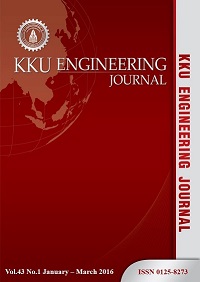Continuous quality inspection in hard disc drive manufacturing: A case study
Main Article Content
Abstract
This paper presents a continuous sampling plan, CSP-100, that was developed from continuous sampling plans, CSP-1, CSP-4 and CSP-C. The objective of this paper is to use the current continuous sampling plans to develop a new CSP-100 plan proving a reduction in the delivery inspection time compared to a single lot sampling plan (SSP) while maintaining the same or greater quality conformance. This CSP-100 was studied in hard disc drive manufacturing. The parameters used in the CSP-100 plan are as follows; 1) the number of consecutive conforming units, 2) the sampling frequency of a partial number in 100% of inspected units, and, 3) the acceptance number. CSP-100 computes four performance measures, average fraction inspected (AFI), average outgoing quality (AOQ), lot acceptance rate (LAR) and defective parts per million (DPPM). The advantage of this CSP-100 plan is that it not only reduces the inspection time, but also provides higher productivity compared with SSP. The verified results of using a CSP-100 plan included a reduced inspection time of 6,722,702 minutes or 15% compared to SSP. CSP-100 also eliminates work stations, transport to inspection areas and inspectors. A function out of box audit (FOBA) was introduced to monitor CSP-100 performance. FOBA audit results confirmed that CSP-100 maintains the same quality level as SSP. The results of implementing CSP-100 showed a reduction in the inspection costs of 3,693,730.04 baht or 60.40% compared to SSP, as well as the additional cost savings since purchase of a new tester was not required. This resulted in a savings of ~44 million baht. The CSP-100 plan also eliminated the issue of delayed delivery that is part of the SSP process. Moreover, it is a better choice for continuous quality inspection in hard disc drive manufacturing.
Article Details
How to Cite
Lorkanchanakul, Y., & Triyacharoen, P. (2016). Continuous quality inspection in hard disc drive manufacturing: A case study. Engineering and Applied Science Research, 43(1), 32–40. retrieved from https://ph01.tci-thaijo.org/index.php/easr/article/view/36240
Issue
Section
ORIGINAL RESEARCH
This work is licensed under a Creative Commons Attribution-NonCommercial-NoDerivatives 4.0 International License.



